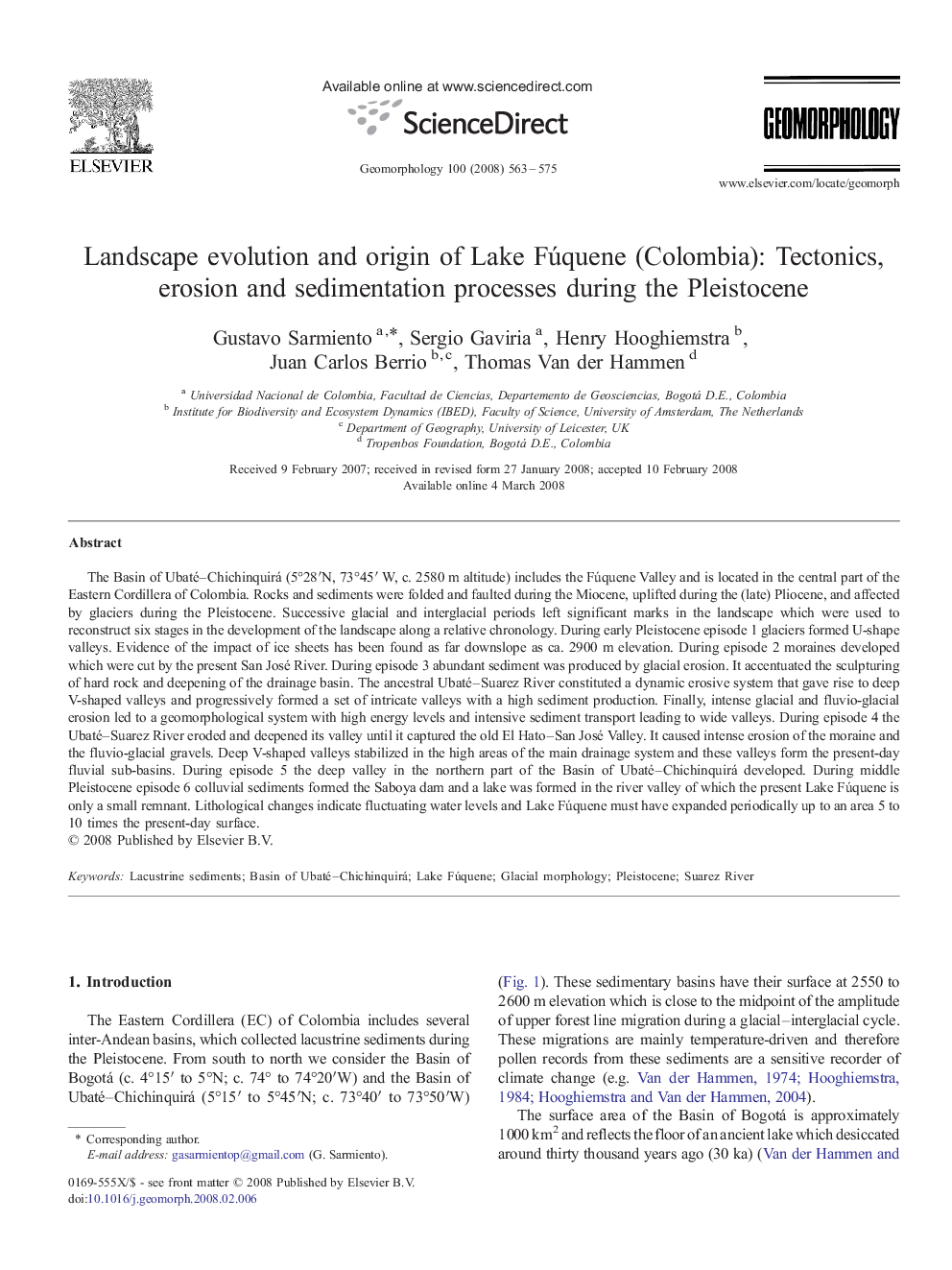| کد مقاله | کد نشریه | سال انتشار | مقاله انگلیسی | نسخه تمام متن |
|---|---|---|---|---|
| 4686720 | 1635553 | 2008 | 13 صفحه PDF | دانلود رایگان |

The Basin of Ubaté–Chichinquirá (5°28′N, 73°45′ W, c. 2580 m altitude) includes the Fúquene Valley and is located in the central part of the Eastern Cordillera of Colombia. Rocks and sediments were folded and faulted during the Miocene, uplifted during the (late) Pliocene, and affected by glaciers during the Pleistocene. Successive glacial and interglacial periods left significant marks in the landscape which were used to reconstruct six stages in the development of the landscape along a relative chronology. During early Pleistocene episode 1 glaciers formed U-shape valleys. Evidence of the impact of ice sheets has been found as far downslope as ca. 2900 m elevation. During episode 2 moraines developed which were cut by the present San José River. During episode 3 abundant sediment was produced by glacial erosion. It accentuated the sculpturing of hard rock and deepening of the drainage basin. The ancestral Ubaté–Suarez River constituted a dynamic erosive system that gave rise to deep V-shaped valleys and progressively formed a set of intricate valleys with a high sediment production. Finally, intense glacial and fluvio-glacial erosion led to a geomorphological system with high energy levels and intensive sediment transport leading to wide valleys. During episode 4 the Ubaté–Suarez River eroded and deepened its valley until it captured the old El Hato–San José Valley. It caused intense erosion of the moraine and the fluvio-glacial gravels. Deep V-shaped valleys stabilized in the high areas of the main drainage system and these valleys form the present-day fluvial sub-basins. During episode 5 the deep valley in the northern part of the Basin of Ubaté–Chichinquirá developed. During middle Pleistocene episode 6 colluvial sediments formed the Saboya dam and a lake was formed in the river valley of which the present Lake Fúquene is only a small remnant. Lithological changes indicate fluctuating water levels and Lake Fúquene must have expanded periodically up to an area 5 to 10 times the present-day surface.
Journal: Geomorphology - Volume 100, Issues 3–4, 15 August 2008, Pages 563–575